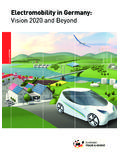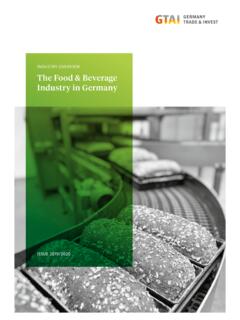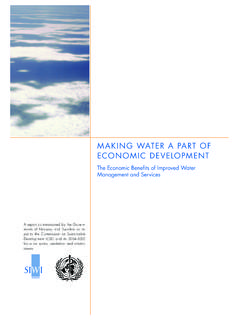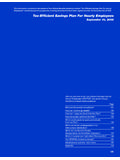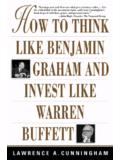Transcription of The German Heating and Cooling Industry - GTAI
1 The German Heating and Cooling Industry Industry Overview The German Heating and Cooling Industry and integration of renewable and Thanks to this market developmment, Europe's Leading ef cient Heating and Cooling tech- research and development in ef - Market for Green nologies through new laws and cient and energy-saving Heating attractive incentives. technologies is highly concentrated Building Technologies in Germany. This promotion has led to a signi - Germany has introduced a raft of cant market shift in Germany which laws and incentives programs to has seen the Heating and Cooling promote renewable energy sources. Industry grow partly as a result. The The country's progressive energy number of renewable ef cient tech- policy is a reaction to two of the nologies such as CHP, heat pumps, most pressing challenges of our solar thermal, condensing Heating time: energy security and climate boilers and pellet Heating systems.
2 Change. has increased enormously. Accordingly, there is a signi cant need for ef cient technologies to reduce primary energy consump- tion. The government is actively promoting the swift development The German Heating Age and Energy Conversion Ef ciency of Heat Generators in Germany 2009. (as percent of total heat generators). and Cooling Industry : Opportunities for Investors 12 % below 10 years, energy conversion The German government intends to ef ciency < 98 %. reduce CO2 emissions by 270 million state of the art metric tons by 2020, and further 70 % between promote the consumption of energy 10 and 24 years produced from renewable sources. old, energy conversion 18 % older than Buildings account for over 40 per- ef ciency < 85 %. 24 years, energy cent of German energy consumption.
3 Conversion ef ci- 85 percent of which is used for heat- ency < 65 %. ing purposes. In private households this gure is as high as 86 percent of Source: BDH 2009. total energy consumption. Of the 17 million Heating generators The saving potentials, however, are Domestic market size, a fully de- in Germany, only 12 percent could as high as 60 percent, with an aver- veloped European logistical center be considered state-of-the-art: 70 age saving of 35 percent. Accordingly, infrastructure, and the availability percent are between 10 and 24 years technology developments facilitating of a highly skilled and well-educat- old, and 18 percent are older still. increased energy ef ciency are be- ed workforce are further decisive As such, signi cant market and, coming ever more important and will factors for investing in Germany.
4 Accordingly, investment potential can continue to be in the long term. be expected in the decades to come. Germany's central location at the In 2008, 45 percent of all newly in- heart of Europe allows neighboring Around 50 percent of total building stalled Heating systems in Germany markets to be easily and swiftly stock will be retro tted within the were linked to renewable energy accessed and serviced. next 20 years ( percent annually sources. This is equivalent to a 13. which is equivalent to 950,000 build- percent growth level in less than Thanks to some of the highest ef- ings from a total stock of 38 million two years. ciency standards in Europe, Ger- buildings). man manufacturing is a recognized Investment Conditions guarantor for outstanding quality.
5 There is an obligation to integrate The German government has set ef cient Heating technologies in out a High-Tech Strategy granting A plethora of incentive and funding order to decrease primary energy generous funding for R&D projects programs are in place to promote consumption per m for new build- in different sectors, with speci c further energy ef ciency progress ings. Potential savings are up to 93 emphasis on the renewable energy and renewable technologies de- percent of primary energy consum- sector. velopments. ption of apartment houses in Ger- many. Demand for air conditioning Renowned R&D institutes and a is increasing due to lifestyle and number of developers of new climate change and adaption to mo- technologies within the Heating dern standards.
6 Air-conditioning and Cooling segment make Germany and refrigeration engineering tech- an optimal investment location. nologies use around 15 percent of the total electric energy produced in Germany. Industry Overview 2009 3. The German Heat Sales of Heat Pumps in Germany 2003-2008. Pump Market 62,452. Germany is the second largest pro- 60,000 Water/water ducer of heat pumps in the European Air/water 50,000. Union (EU). More than 80,000 heat 43,955 44,633 Brine/water pumps are produced annually in 40,000. Germany. More than 62,000 heat units 30,000. pumps were sold in 2008, contribut- 1. ing to a total of 350,000 heat pumps 20,000 18,487. installed in Germany by the end of 9,745 12,636. 10,000. 2008. The market for air/water heat pumps in particular has experienced 0.
7 Rapid growth. The German heat pump 2003 2004 2005 2006 2007 2008. market is expected to reach 121,300. Source: BWP 2009. installations by 2015, with revenues expected to rise to USD billion . equivalent to a growth rate of Sales of Heat Pumps in Europe 2005-2008. percent. Growing European 600,000 580,489. Market Opportunities 500,000. With total sales volume of 580,489. installed heat pumps in 2008, the 400,000 392,756. 370,447. European heat pump market grew units 300,000 30. by 50 percent compared to 2007 249,394. levels, with overall earnings of USD 200,000. billion. Potential revenues in the 100,000. European heat pump market for the period up to 2015 are estimated to be 0. in the region of USD billion. 2005 2006 2007 2008. Note: Total sales in eight countries.
8 Market Drivers in Germany Source: EPHA 2009. There exists a signi cant demand for energy ef ciency in Germany, with heat pumps providing an attrac- Incentives Programs The most important incentives at tive alternative to oil central Heating There are several incentive pro- the national level for heat pumps are systems. A number of strict quality grams promoting ef cient and innovation promotions for air/water, standards providing consumers and renewable Heating and Cooling water/water or brine/water heat, installers with heat pump usage and technologies. Available funding for pumps subject to the coef cient of maintenance guidelines have been the Marktanreizprogramm or Incen- performance (COP) level. For ex- introduced. German energy suppli- tive Program will be increased to ample, within existing building stock ers actively promote commercial- a maximum of EUR 500 million per it is possible to bene t from grants ization and offer special heat pump year from 2009 through 2012.
9 The of up to EUR 30 per m of oor space rates/tariffs while different Industry availability of nancial incentives up to a maximum of EUR 4,500 per associations and manufacturer that encourage the use of renew- apartment or percent of net alliances actively support the heat able energies for Heating of new investment costs respectively for pump market. Supportive legisla- and existing residential and non- a water/water or brine/water heat tion such as the Renewable Energies residential buildings has increased pump with a COP of Newly built Heat Act provides a signi cant boost signi cantly. These incentives are apartments have a slightly higher to the German heat pump market. offered at national and local levels. COP value of 4 Industry Overview 2009.
10 The German Pellet Sales of Pellet Heating Systems in Germany 2000-2009. and Pellet Heating 140,000 140,000. Systems Market With annual consumption of 151 ter- 120,000. awatt hours (TWh) in 2007, Germany is the largest consumer of bioener- 105,000. gies within the EU-27. Around 25. 100,000. million m of wood in the form of logs, wood chips, pellets, and bri- quettes are used for Heating every 83,000. 80,000. year providing heat to almost one units in ve German households. The 70,000. 1. total stock of wood Heating in house- 60,000. holds stands at over nine million units with the trend increasing. 44,000. 40,000. Fast Developing Market Currently the majority of these 27,000. units are individual replaces ( , 19,000. 20,000. replaces and stoves), but larger 13,000.

